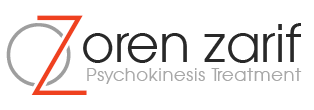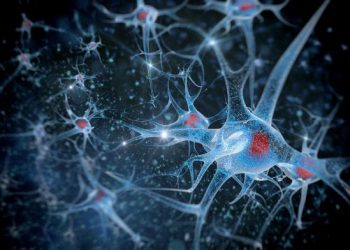Breast cancer cells can grow and spread quickly, especially when a gene mutation or extra copies of the protein HER2 stimulates them. HER2 positive tumors tend to be more aggressive and harder to treat.
People with HER2 positive breast cancer have a higher risk of dying from their cancer. Doctors test tissue from a biopsy or after surgery to find out whether you have HER2 levels that are too high.
Treatment Options
Many breast cancers have a protein called human epidermal growth factor receptor 2 (HER2). If HER2 is overexpressed in tumor cells, it can help them grow and spread. Treatments that target HER2 can stop or slow the growth of these cancer cells.
Most HER2 positive patients are treated with chemotherapy combined with targeted therapy drugs. The first of these targeted therapies was trastuzumab, which attaches to HER2 and stops it from working. Trastuzumab is usually given through a needle in a vein (intravenously). It can be used alone or with chemotherapy drugs to treat invasive HER2-positive breast cancer. It is also used to treat metastatic breast cancer that has spread to other parts of the body (metastatic HER2-positive breast cancer).
The success of trastuzumab led to the development of more targeted therapies, including pertuzumab and pertuzumab emtansine. These are antibodies that join together with a drug to make a chemical that targets HER2. Pertuzumab and pertuzumab have been shown to improve outcomes when combined with chemotherapy in early HER2 positive breast cancer. They are now often used in place of doxorubicin and cyclophosphamide (AC) as the first line of treatment for HER2 positive breast cancer.
Other targeted therapy options include lapatinib, neratinib and poziotinib. These drugs block the HER2 signaling pathway by inhibiting HER2 from binding to HER1 and HER2. The results of several large trials have demonstrated improved PFS and OS with these drugs compared to standard of care.
Other research is being done to find ways to overcome resistance to HER2-targeted therapies. These efforts include combining other drug classes with HER2-targeted therapy to enhance antitumor activity, finding new antibody-drug conjugates by altering the linker or payload of the antibody, and using bispecific antibodies that target two different HER2 epitopes at the same time. Immunotherapy is also being explored as a way to stimulate the body’s own immune system to fight the cancer.1
Surgery
Breast cancer is not a single disease. It’s actually a group of diseases that vary in how fast they grow and how aggressively they spread. It’s important for doctors to know the type of breast cancer they’re dealing with so that they can make the best treatment decisions. One of the first things that a doctor will do is determine if the tumor has too many copies of the HER2 gene. If it does, the doctor will diagnose the patient with HER2-positive breast cancer. HER2-positive breast cancer is a faster-growing type of breast cancer and may be more difficult to treat than other types of breast cancer.
The HER2 gene tells breast cells when to grow and when not to grow. When there is too much HER2 protein, the cells start to grow and divide uncontrollably and form cancerous tumors. Breast cancers that have too many HER2 genes are called HER2-positive. Other types of cancer such as gastrointestinal, bladder and ovarian cancer can also be HER2 positive.
Women with HER2-positive breast cancer can still be cured with modern treatments such as targeted therapy. These drugs block the HER2 gene and stop cancer cells from growing and spreading. Combined with surgery, radiation and chemotherapy, women can have good outcomes even with advanced breast cancer.
The outlook for patients with HER2-positive breast cancer varies depending on the size of their tumor, whether or not it’s hormone receptor positive (needs oestrogen and progesterone to grow) and its location within the body, including the lymph nodes and distant sites. The most common symptoms of HER2-positive breast cancer are a lump in the breast and armpits, a feeling that your chest is full or that you can’t breathe.
It’s possible for HER2-positive breast cancer to go into remission (stop growing and no longer cause symptoms or be detected by tests) for years. However, it’s still possible for the cancer to return and spread to other areas of the body. For this reason, healthcare professionals recommend ongoing follow-up appointments to look for any signs that the cancer is coming back.
Radiation Therapy
Radiation therapy can be used alone or in combination with other treatments to cure some cancers. It may be given before surgery to shrink the tumor and prevent it from coming back or after surgery to kill any remaining cancer cells. It can also be used with chemotherapy to make those drugs more effective or help relieve symptoms in advanced disease.
Before the development of targeted therapies, HER2-positive breast cancer had poor prognoses. Survival rates now exceed 90% in early stage HER2 positive BC when treated with chemotherapy and a targeted drug.1
A tumor’s HER2 status is determined through an immunohistochemistry (IHC) test. Tumors with an IHC score of zero or one are HER2 negative; those with a score of two are HER2 overexpressed. In cases where the IHC score is unclear, a fluorescence in situ hybridization (FISH) test can be done to confirm HER2 overexpression.
The most common type of radiation is external beam radiotherapy (EBRT). This treatment uses a machine located outside the body to focus a beam of x-rays at the site of the tumor. Several types of EBRT are available, including intensity-modulated radiation therapy (IMRT), stereotactic body radiosurgery (SBRT) and vMAT. IMRT and SBRT use multiple radiation beams to precisely target the tumor and minimize radiation to healthy surrounding tissue.
Once the main radiation sessions are complete, patients may need a “radiation boost” to treat remaining cancer cells. The doctor will determine the appropriate amount of radiation needed and how many additional days of treatment it will take.
Radiation treatment can cause side effects such as nausea, vomiting and hair loss. It is important to talk to your doctor about how you can cope with these side effects so that they can be managed or prevented as much as possible.
While the success of anti-HER2 therapies has improved survival in HER2 positive metastatic breast cancer, many patients will eventually develop resistance to these agents. There is continuing research in the preclinical and clinical arenas to develop original therapeutic strategies to overcome HER2 resistance. These efforts are focused on a broad range of platforms including the further exploitation of HER2-targeted mAbs, tyrosine kinase inhibitors (TKIs), antibody-drug conjugates (ADCs) and bispecific antibodies. Immunotherapy approaches that involve administering checkpoint inhibitors, linking effector T cells to HER2-targeted antibodies or using cellular therapy are also being pursued.
Chemotherapy
When breast cancer cells make too much HER2 protein, they grow more quickly than normal cells and are more likely to spread to other parts of the body. About 15-20% of all breast cancers are HER2 positive. HER2 is a gene that codes for a receptor protein on the surface of the cell that relays signals to the inside of the cell. Mutations in the HER2 gene can cause the cells to make too much of the protein. Other cancers that can be HER2 positive include bladder, gastrointestinal, pancreatic and ovarian cancers.
A pathologist can use a tissue sample from a biopsy or surgery to determine whether a tumor is HER2 positive. The HER2 status of the cancer affects what treatment options are available.
There are medicines that can treat HER2 positive cancers. These are called anti-HER2 medicines. They work by attaching to the HER2 receptor proteins on the cancer cells and blocking them from sending signals. The types of anti-HER2 medicines include monoclonal antibodies, tyrosine kinase inhibitors and antibody-drug conjugates.
Most patients with HER2 positive breast cancer can be treated with combination chemotherapy. These treatments are given in a high dose and for a long time. The goal is to kill the cancer cells and stop them from growing.
Depending on how far the cancer has spread, surgery may be an option. If the cancer is confined to the breast or chest wall, surgeons can often remove all of it. Radiation therapy can also help with HER2 positive cancer. A beam of high-energy X-rays can block signals that cause cancer cells to grow.
It is important to remember that HER2-positive cancers can come back and grow again, even after treatment. That’s why it’s important to follow up with your doctor regularly. Those visits give your doctor the chance to look for signs of cancer and recommend other treatments if necessary.
It’s also important to note that 5-year relative survival rates for HER2 positive and HER2-negative breast cancers are the same. So, it’s not just the HER2 status that can impact your life expectancy. Your hormone receptor status and the stage of the cancer can also have an effect.









